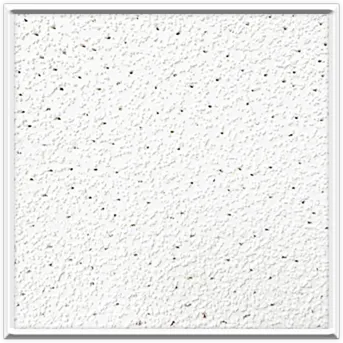Oct . 19, 2024 10:06 Back to list
Suspended Ceiling Systems and Tile Design for Modern Interiors
Understanding Suspended Ceiling Grid and Tiles An Essential Guide
Suspended ceiling grids and tiles have become a popular choice in modern architectural design, offering both functionality and aesthetic appeal. They create an effective ceiling system that conceals wiring, plumbing, and ductwork while providing excellent insulation and sound control. This article delves into various aspects of suspended ceiling grids and tiles, including their structure, types, advantages, and installation process, thus equipping you with the knowledge to make informed decisions for your space.
What is a Suspended Ceiling Grid?
A suspended ceiling grid, often referred to as a dropped or false ceiling, is a framework mounted beneath a building’s structural ceiling. Typically composed of metal runners and cross tees, this grid system supports ceiling tiles and creates a space between the original ceiling and the finished ceiling. The height of a suspended ceiling can vary, making it a versatile option in many settings, from office buildings to residential homes.
Types of Ceiling Grids
There are several types of suspended ceiling grids, each suited for different design requirements and aesthetic preferences
1. Main Tee Grids These are the primary structural elements that lay the foundation for the grid system. Main tees usually run the length of the room.
2. Cross Tees These pieces connect with main tees at perpendicular angles to create a grid system. The size and spacing between the cross tees will affect the layout of the ceiling tiles.
3. Wall Angles Wall angles are installed along the perimeter of the room, providing a transition from the wall to the ceiling grid and ensuring stability.
4. Specialty Grids Adjustments in grid design may be necessary when installing lighting fixtures, ventilation systems, or integrating architectural features into the ceiling design.
Types of Ceiling Tiles
Ceiling tiles come in various materials, sizes, and finishes, allowing for a customized look for different interior spaces
1. Acoustic Tiles Designed to absorb sound, these tiles are perfect for spaces requiring acoustic control, such as offices or auditoriums. They come in various designs, including textured surfaces.
2. Vinyl Tiles These tiles are moisture-resistant and durable, making them suitable for areas such as kitchens and bathrooms.
3. Mineral Fiber Tiles Often made from fibrous materials, these tiles are lightweight and offer excellent sound absorption qualities.
suspended ceiling grid and tiles

4. Metal Tiles For a modern aesthetic, metal tiles provide a sleek and contemporary look, often used in commercial spaces.
Advantages of Suspended Ceilings
The benefits of installing suspended ceilings are numerous
- Aesthetic Flexibility With a wide range of ceiling tiles available, you can choose different designs and colors to enhance the overall look of your space.
- Improved Acoustics Acoustic ceiling tiles help reduce noise levels, making them ideal for busy environments.
- Accessibility Disruption to existing systems can be minimized since the ceiling cavity can be accessed for maintenance and repairs without needing to tear down the ceiling.
- Insulation and Energy Efficiency Suspended ceilings can improve energy efficiency by enhancing insulation, leading to potential cost savings on energy bills.
Installation Process
Installing suspended ceilings and tiles can be a straightforward process, often manageable for skilled DIY enthusiasts. The general steps include
1. Measurement Measure the room to determine how much material is required.
2. Planning Design the grid layout, ensuring appropriate spacing for ceiling tiles.
3. Installation of the Grid Begin by attaching wall angles, followed by the main tees and cross tees to form a stable grid.
4. Placing the Tiles Finally, insert the tiles into the grid, ensuring they fit snugly and align with the design vision.
Conclusion
Suspended ceiling grids and tiles offer a remarkable blend of functionality and style. Whether for a commercial or residential space, understanding the different types of grids and tiles helps you make choices that enhance your interior environment. With their array of benefits, from sound control to aesthetic versatility, suspended ceilings are undoubtedly a smart addition to contemporary design projects. Embrace the possibilities of suspended ceilings, and transform your space into a functional and visually appealing haven.
-
Quality Ceiling Trap Doors & Access Panels | Easy & Secure AccessNewsAug.30,2025
-
Durable Ceiling T Grid Systems | Easy InstallationNewsAug.29,2025
-
PVC Gypsum Ceiling: Durable, Laminated Tiles for Modern SpacesNewsAug.28,2025
-
Pvc Gypsum Ceiling Is DurableNewsAug.21,2025
-
Mineral Fiber Board Is DurableNewsAug.21,2025
-
Ceiling Tile Clip Reusable DesignNewsAug.21,2025







